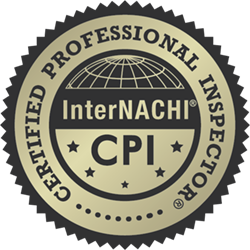The end-of-the-year holidays are often busy times filled with family and friends. They can also be dangerous if you don’t take precautions at home. The U.S. Fire Administration (USFA) reports that fire fatalities during the holidays are 70 percent greater and property loss increases by 34 percent. As you go about your preparations and home decorating, follow this advice about electrical safety for the holidays.
Practice Outdoor Lighting Safety
If you plan to hang lights outdoors, make sure light strings and extension cords are designed for outdoor use. Electrical items rated for outdoors are sturdier and can stand up to rain and snow.
Use insulated hooks for displaying lights. Nails, staples, and screws can pierce the cable and cause an electrical emergency. Keep outdoor decorations at least 10 feet away from power lines.
Plug outdoor lights into circuits protected by circuit interrupters. Outdoor circuits are available for those that aren’t GFCI protected. Use a wooden ladder when decorating rather than metal to help avoid electrical shock.
Inspect Your Lights for Electrical Safety for the Holidays
Inspect all indoor and outdoor electrical decorations for damage before use. Look for cracked or damaged sockets, bare wires, and loose connections. These can cause fires or electrical shock. Plug strings of lights in to test that all bulbs are working. Replace broken, missing, and blown bulbs.
Christmas lights should have labels verifying they have been tested and meet safety regulations for use in the home. Look for a green UL (Underwriters Laboratories) sticker on indoor lights and a red sticker on indoor/outdoor lights.
Use Extension Cords Properly
Check extension cords frequently for overheating. If the cord feels hot, unplug it. Outdoors, make sure connections are resting on a brick or rock, not on the ground. Debris, rain, and snow can cause a hazard.
For electrical safety during the holiday, don’t overload extension cords. If using multiple light strings, distribute them among extension cords. The USFA recommends using no more than three strands of lights per cord. However, for LED lights, it’s safe to connect up to 25 strands end-to-end.
The holiday season usually means more traffic in your home. Keep electrical cords out of pathways. Don’t run them across doorways or hide them under rugs. Never let children or pets play with electrical cords or strings of lights.
Don’t Overload Electrical Outlets
Overloading outlets is the number one cause of holiday fires. Only use one high-wattage decoration per outlet. Plan holiday displays based on the number of outlets in your home, and consider the locations of the outlets. Make use of extension cords as directed above and use surge-protecting power strips.
Take Care with Incandescent Lights
Although not used as often, some people love the look of larger and brighter incandescent bulbs. Never connect more than three strings of these lights together. Incandescent bulbs use more wattage and get hotter than other lights. Too many lights can trip a breaker or blow a fuse, which is a fire risk. LED lights are safer and use far less energy.
Electrical Safety for the Holidays: Don’t Leave Holiday Lights Unattended
Before going to bed or leaving the house, turn off all holiday lights. This saves energy and helps prevent blown fuses or fires while you’re away. Using a timer to turn lights off is a helpful tip for electrical safety.
Properly Inspected Home Inspection Services offers home inspections in the Tampa area of Florida. Contact us to request our services.

